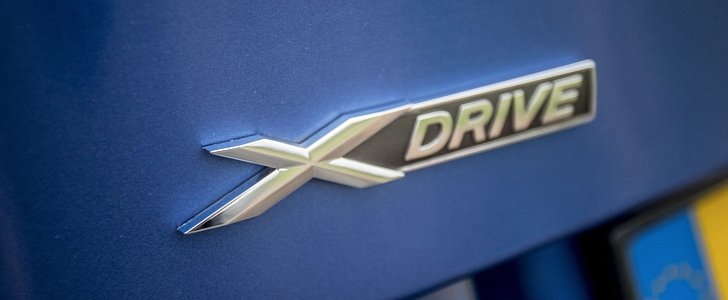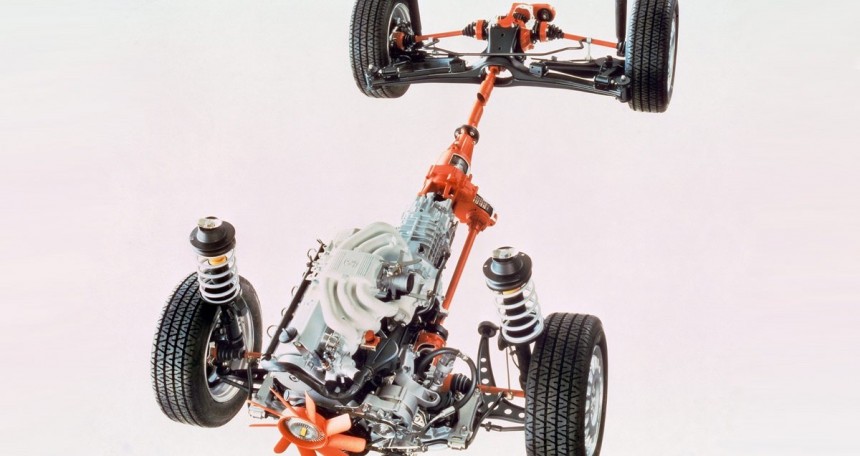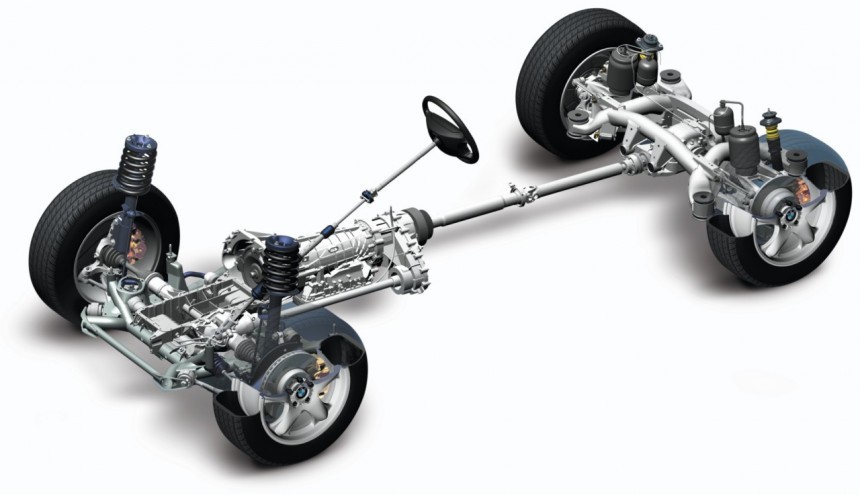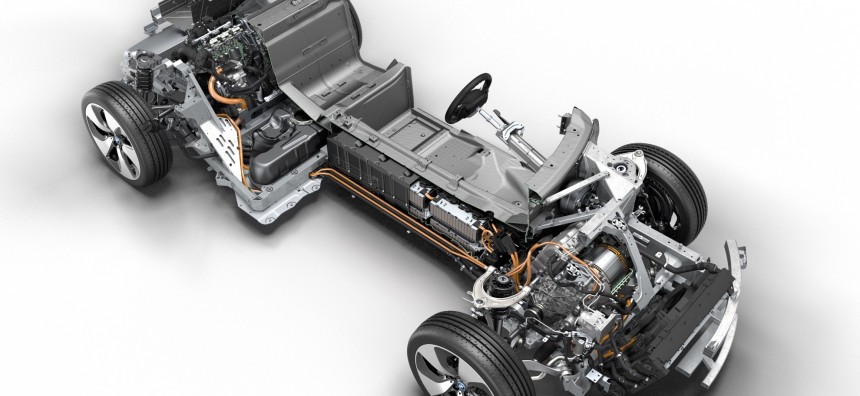BMW, the maker of the “Ultimate Driving Machine,” used to be known for its rear-wheel-drive configuration, used in the entire range. In the mid-80s, BMW introduced its first all-wheel-drive car. Eventually, it led to a whole series of models with this drive technology.
Currently, BMW even has front-wheel-drive cars on its offer, and the German carmaker has introduced a wide variety of SUVs over the years.
We decided to take a look at the evolution of BMW’s all-wheel-drive system over the three decades since its first introduction.
Unlike other carmakers, BMW has kept a close grip (pun intended) on its strategy from the beginning, and the system was changed pretty late in its history, with the rebranding that called it xDrive. Other improvements soon followed, as you will see in this article. Significant alterations to BMW's all-wheel-drive systems were introduced in recent years. But first, let's find out where it all started.
Before xDrive, BMW used an “X” in the model badging to identify the all-wheel-drive versions of its cars. The small letter was after the numbers that signified the type of model and engine variant, as well as after the symbol that designated the fuel used (i for gasoline and D for diesel). The first 4x4 BMW production cars did not come with a diesel engine, so this designation was left to the E30 325iX and the E34 525iX.
Shortly before the introduction of xDrive, BMW decided to make a change in the way it named its 4x4 models. Starting with the E46 3 Series, the “X” was moved before the letter signifying the fuel type, and it also marked the first use of all-wheel-drive for BMW in the company of a diesel engine.
The first AWD system from BMW operated permanently and had a fixed torque split of 37/63 percent (front/rear). BMW chose these exact percentages because they discovered that 37% of the E30’s weight would rest on the front wheels during hard acceleration, so they optimized it for this driving condition.
To prevent understeer, BMW fitted the car with equal length front half shafts, which slid into an open differential. Instead of traction control, the car had a modified ABS controller, which was enhanced to handle better low grip situations. The transfer box included a viscous coupling from ZF, while the rear axle had a mechanical limited-slip differential.
BMW then used the same system on the E34, including the torque split between the two axles. However, an update in the E34 range changed the mechanical limited-slip differential at the rear for an open diff, as the car was fitted with BMW’s ASC+T traction control system.
Before calling its all-wheel-drive technology “xDrive,” BMW changed a few things. The first car to still use the old designation for the technology was the E46 3 Series, but it had different underpinnings when compared to the E30 and E34.
First of all, the torque split between the axles was changed to 38 front, and 62 rear, and limited-slip differentials were not employed, as the German company preferred the use of ADB-X traction control. The acronym comes from Automatic Differential Brake, and it works by braking individual wheels. Unlike traction control, it works even when the former is deactivated.
The described version of the all-wheel-drive system was used from September 1999 to 2003. Around the same time, BMW introduced the X5, its first Sports Activity Vehicle.
While sharing powertrains and interior parts with the E39 5 Series, the first X5 had an all-wheel-drive system similar to the one on the E46, with the addition of a hill-descent control. Understandably, the components used on the 3 Series X-models and X5 were not identical, but operated on the same principle.
BMW launched its first cars with xDrive in 2003. The significant change from previous all-wheel-drive solutions from this brand was the variable torque split between axles. The transfer was achieved using a wet clutch between the front/rear drive wheels, which was operated electronically and provided a reaction time of less than a tenth of a second.
BMW claims the system is better than those used by its rivals because it can transfer up to 100% of available torque to an axle in case slippage is detected in the other set of wheels. As the video below explains, the system provides up to 96% torque to either axle in case this is necessary, while the other gets the remaining four percent.
Five years after xDrive was launched, BMW introduced a new rear differential with a system called Dynamic Performance Control. The DPC involves a set of electronically operated clutches that can spin an individual wheel faster than the opposite on the same axle. Planetary gears are also used for achieving this function, and the system reduces understeer and helps control oversteer, along with extra traction when axles are crossed (two diagonally opposite wheels are in the air).
Unlike off-road biased all-wheel-drive systems, the DPC favors dynamic driving on roads. The system was introduced on the first-generation X6, and then used on the M versions of the X5 and X6 models. BMW linked the xDrive, DPC and Dynamic Stability Control systems to work together, and the four-wheel drive system correct slippage first, while the DPC and DSC act in case the system does not manage to achieve traction through its modulation.
The DPC and DSC would operate in this situation by braking individual wheels, according to need. The year 2009 marked the introduction of the first all-wheel-drive hybrid from BMW, the Active Hybrid X6.
BMW’s performance SUVs, X5M and X6M, also come with xDrive as standard. It works as described above, but has different programming for its operation and the stability control system. The German carmaker describes the variation as “M-tuned.” The M5 is expected to be available for the first time with an all-wheel-drive system with the next generation, and we believe it will work in the same way, with a potential bias to the rear wheels until traction is lost.
The introduction of BMW’s first front-wheel-drive model, complete with a transversely mounted engine, brought new challenges for the engineering department. Since the move was planned years ahead, the UKL platform supports all-wheel-drive, but conventional xDrive was not available.
BMW still called the system used on the cars with transversely mounted engines and all-wheel-drive “xDrive,” but the technical solution employed is different from the regular system. Instead of a rear-wheel-drive solution with an adaptation for AWD, BMW resorted to a Haldex-based solution, just like its competitors use on comparable cars. On an electronic level, the system on the Haldex-based cars thinks just like its counterparts, but is configured towards balance, rather than a rear-wheel-biased solution.
Another significant change in BMW’s all-wheel-drive solution was the introduction of e-AWD. This system is present in two opposite forms on the 2 Series Active Tourer 225xe and the BMW i8. The idea of e-AWD is that the cars benefit from the all-wheel-drive system in certain conditions, but do not have a direct link between the axles.
In the case of the BMW 2 Series Active Tourer 225xe, the rear wheels are driven by an electric motor, while the front axle has an internal-combustion engine. When both systems are operating, the car has all-wheel-drive. In the full-electric mode, BMW’s first front-wheel-drive car, and its first MPV, functions as a rear-wheel-drive vehicle. Once it turns to hybrid mode, it becomes an AWD model.
Meanwhile, the i8, BMW’s first hybrid supercar, has a rear engine configuration and an electric motor on the front axle. In full-electric mode, the i8 operates in a front-wheel-drive configuration, while the hybrid mode turns the first butterfly-door BMW into an all-wheel-drive vehicle. Ironically, the other model of the BMW i range, the i3, has a rear-wheel-drive configuration in both fully electric and range-extender versions.
We decided to take a look at the evolution of BMW’s all-wheel-drive system over the three decades since its first introduction.
Unlike other carmakers, BMW has kept a close grip (pun intended) on its strategy from the beginning, and the system was changed pretty late in its history, with the rebranding that called it xDrive. Other improvements soon followed, as you will see in this article. Significant alterations to BMW's all-wheel-drive systems were introduced in recent years. But first, let's find out where it all started.
The first all-wheel-drive system from BMW
Shortly before the introduction of xDrive, BMW decided to make a change in the way it named its 4x4 models. Starting with the E46 3 Series, the “X” was moved before the letter signifying the fuel type, and it also marked the first use of all-wheel-drive for BMW in the company of a diesel engine.
The first AWD system from BMW operated permanently and had a fixed torque split of 37/63 percent (front/rear). BMW chose these exact percentages because they discovered that 37% of the E30’s weight would rest on the front wheels during hard acceleration, so they optimized it for this driving condition.
To prevent understeer, BMW fitted the car with equal length front half shafts, which slid into an open differential. Instead of traction control, the car had a modified ABS controller, which was enhanced to handle better low grip situations. The transfer box included a viscous coupling from ZF, while the rear axle had a mechanical limited-slip differential.
BMW then used the same system on the E34, including the torque split between the two axles. However, an update in the E34 range changed the mechanical limited-slip differential at the rear for an open diff, as the car was fitted with BMW’s ASC+T traction control system.
The first updates of the all-wheel-drive technology
First of all, the torque split between the axles was changed to 38 front, and 62 rear, and limited-slip differentials were not employed, as the German company preferred the use of ADB-X traction control. The acronym comes from Automatic Differential Brake, and it works by braking individual wheels. Unlike traction control, it works even when the former is deactivated.
The described version of the all-wheel-drive system was used from September 1999 to 2003. Around the same time, BMW introduced the X5, its first Sports Activity Vehicle.
While sharing powertrains and interior parts with the E39 5 Series, the first X5 had an all-wheel-drive system similar to the one on the E46, with the addition of a hill-descent control. Understandably, the components used on the 3 Series X-models and X5 were not identical, but operated on the same principle.
The introduction of xDrive
BMW claims the system is better than those used by its rivals because it can transfer up to 100% of available torque to an axle in case slippage is detected in the other set of wheels. As the video below explains, the system provides up to 96% torque to either axle in case this is necessary, while the other gets the remaining four percent.
Five years after xDrive was launched, BMW introduced a new rear differential with a system called Dynamic Performance Control. The DPC involves a set of electronically operated clutches that can spin an individual wheel faster than the opposite on the same axle. Planetary gears are also used for achieving this function, and the system reduces understeer and helps control oversteer, along with extra traction when axles are crossed (two diagonally opposite wheels are in the air).
Unlike off-road biased all-wheel-drive systems, the DPC favors dynamic driving on roads. The system was introduced on the first-generation X6, and then used on the M versions of the X5 and X6 models. BMW linked the xDrive, DPC and Dynamic Stability Control systems to work together, and the four-wheel drive system correct slippage first, while the DPC and DSC act in case the system does not manage to achieve traction through its modulation.
The DPC and DSC would operate in this situation by braking individual wheels, according to need. The year 2009 marked the introduction of the first all-wheel-drive hybrid from BMW, the Active Hybrid X6.
BMW’s performance SUVs, X5M and X6M, also come with xDrive as standard. It works as described above, but has different programming for its operation and the stability control system. The German carmaker describes the variation as “M-tuned.” The M5 is expected to be available for the first time with an all-wheel-drive system with the next generation, and we believe it will work in the same way, with a potential bias to the rear wheels until traction is lost.
E-AWD and Haldex-based xDrive
BMW still called the system used on the cars with transversely mounted engines and all-wheel-drive “xDrive,” but the technical solution employed is different from the regular system. Instead of a rear-wheel-drive solution with an adaptation for AWD, BMW resorted to a Haldex-based solution, just like its competitors use on comparable cars. On an electronic level, the system on the Haldex-based cars thinks just like its counterparts, but is configured towards balance, rather than a rear-wheel-biased solution.
Another significant change in BMW’s all-wheel-drive solution was the introduction of e-AWD. This system is present in two opposite forms on the 2 Series Active Tourer 225xe and the BMW i8. The idea of e-AWD is that the cars benefit from the all-wheel-drive system in certain conditions, but do not have a direct link between the axles.
In the case of the BMW 2 Series Active Tourer 225xe, the rear wheels are driven by an electric motor, while the front axle has an internal-combustion engine. When both systems are operating, the car has all-wheel-drive. In the full-electric mode, BMW’s first front-wheel-drive car, and its first MPV, functions as a rear-wheel-drive vehicle. Once it turns to hybrid mode, it becomes an AWD model.
Meanwhile, the i8, BMW’s first hybrid supercar, has a rear engine configuration and an electric motor on the front axle. In full-electric mode, the i8 operates in a front-wheel-drive configuration, while the hybrid mode turns the first butterfly-door BMW into an all-wheel-drive vehicle. Ironically, the other model of the BMW i range, the i3, has a rear-wheel-drive configuration in both fully electric and range-extender versions.









